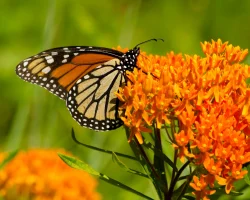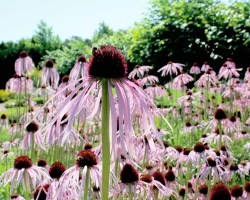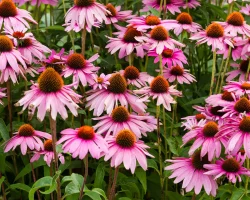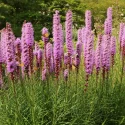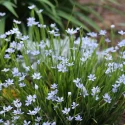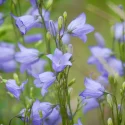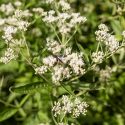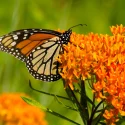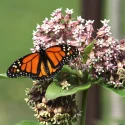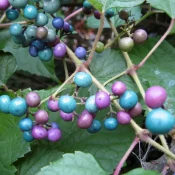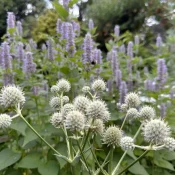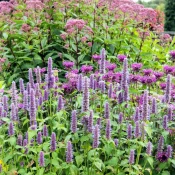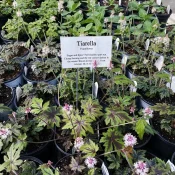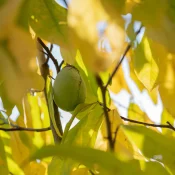Gaura is a long-blooming perennial native to hot and dry regions of Texas and Louisiana. It thrives in full sun and poor, well-drained soil—the kind of dry, sandy spot most plants would rather avoid. Its tall, airy stems wave with small white or pink flowers that look like fluttering butterflies. Once established, gaura handles heat, drought, and neglect like a pro.
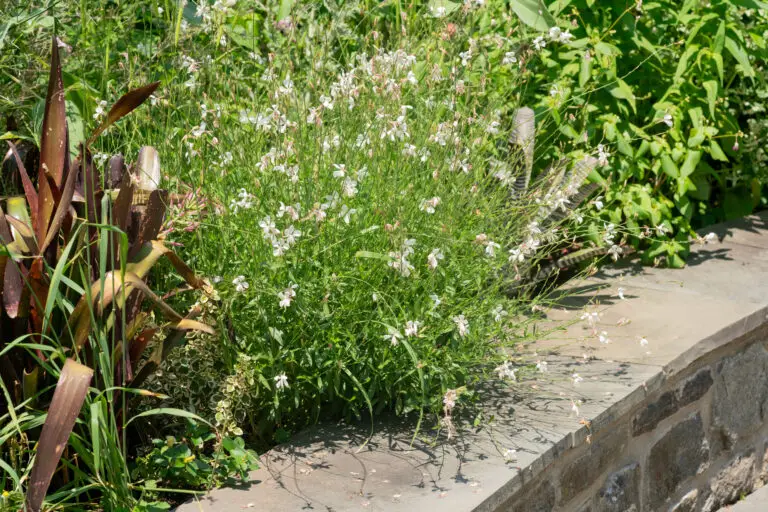
Is gaura a good choice for my yard?
Yes, if…
- You want something that flowers for months with little effort.
- You have dry soil or a spot that bakes in the sun.
- You like plants that look natural, not overly manicured.
Why gaura matters
- Pollinator magnet: The tiny four-petaled flowers are pollinator favorites.
- Drought-tolerant: Thanks to a long taproot, these flowers can withstand hot and dry areas.
- Happy in challenging places: Full sun, poor soil, and lots of drainage? These might be a plant for you.
And one more reason… 🦋
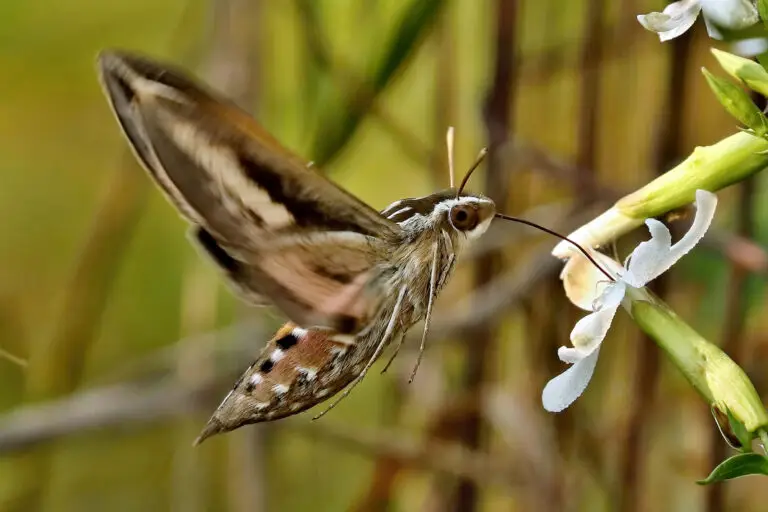
Gaura is a host plant for the white-lined sphinx moth
A host plant is a species that a butterfly or moth lays its eggs on and/or its caterpillars eat. Planting gaura helps an iconic moth (these moths are also sometimes called ‘hawk moths’) survive.
New to native?
Before lawns and landscaping, native plants were here. They’ve fed birds, bees, and butterflies for thousands of years—and they’ll do the same in your yard. The best part? They’re easier to grow than you think.
Where is gaura native?
Gaura is native to the hot, southwestern states of Texas and Louisiana.
Have you seen gaura elsewhere?
Gardeners throughout North America love gaura—it’s hard not to want to plant this charming plant that thrives in difficult places. You’ll now find gaura in gardens as far away as Pennsylvania.
As long as you plant gaura in its dry, sunny location, this plant can happily thrive in areas outside its native range.
Where gaura shines in your yard
Gaura looks best when planted in drifts where its wiry stems can move freely in the wind. It’s perfect for sunny borders, meadows, or prairie-style plantings. It also works beautifully in gravel gardens and alongside native grasses like little bluestem or purple Muhly grass.
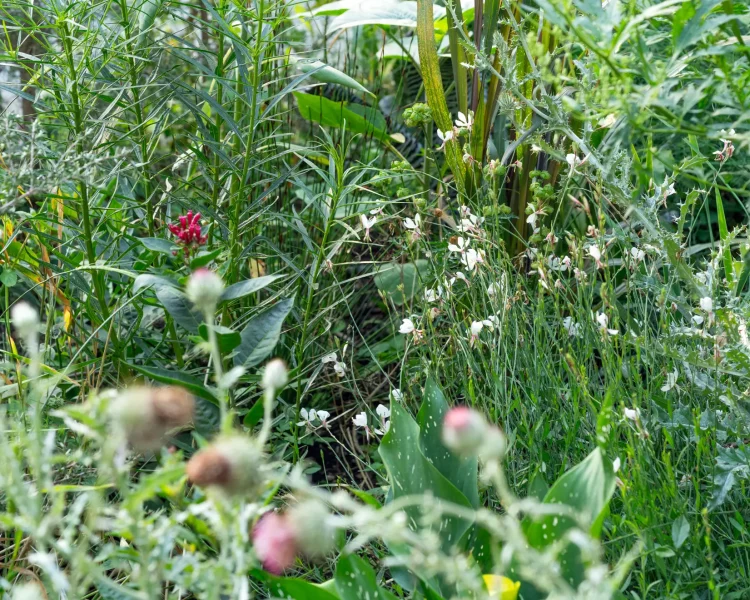

Where can I find gaura?
We are not going to lie and say that finding gaura is going to be as simple as driving to your local big box nursery. It might take a little extra energy to find this native gem, but it is worth it! Here are some recommendations for sourcing this native plant:
Where can I find seeds and plants?
Finding native plants can be challenging (we partly blame Marie Antoinette.) To make it easier, we’ve assembled four sourcing ideas.
Native Nursery List
300+ native nurseries makes finding one a breeze
Online Native Plant Sellers
We've included 100+ online resources to help
Society Plant Sales
Every state has a native plant society; find yours
Online Communities
Local Facebook groups are a great plant source
What are good pairings for gaura?
Gaura loves full sun and lots of drainage. Pair with other natives that love this—thankfully there are a lot to pick from!

If your yard feels too dry, too sunny, or too unruly for traditional garden plants, gaura fits right in. It moves with the wind, blooms for months, and asks for almost nothing in return. Let it fill the gaps between more structured plants, or give it space to sway on its own—it’s a reminder that a bit of wildness belongs in every garden. Where to next? How about our Beginner’s Guide to Native Host Plants, or our Beginner’s Guide to Native Grasses and Sedges? Happy planting!
Sources
- Chicago Botanic Garden. “Gaura.” Last modified 2024. https://www.chicagobotanic.org/plant-information/plant-profiles/gaura
- Mahr, Susan. Wisconsin Horticulture. “Gaura, Gaura Lindheimeri,” 2025. https://hort.extension.wisc.edu/articles/gaura-gaura-lindheimeri/
- Ncsu.edu. “Oenothera Gaura (Beeblossom, Biennial Gaura) | North Carolina Extension Gardener Plant Toolbox,” 2025. https://plants.ces.ncsu.edu/plants/oenothera-gaura/
- GardenDesign.com. “How to Grow Gaura Plants: Tips for Beautiful Blooms – Garden Design,” 2024. https://www.gardendesign.com/perennials/gaura.html
- Usda.gov. “Oenothera lindheimeri,” n.d. https://plants.usda.gov/plant-profile/OELI2.

